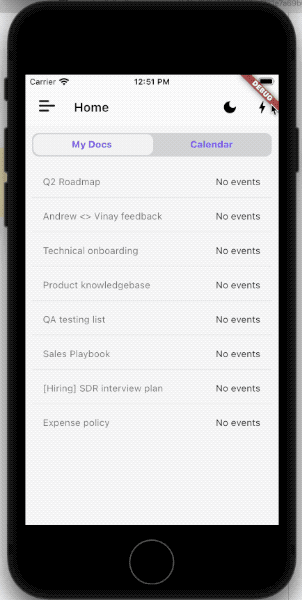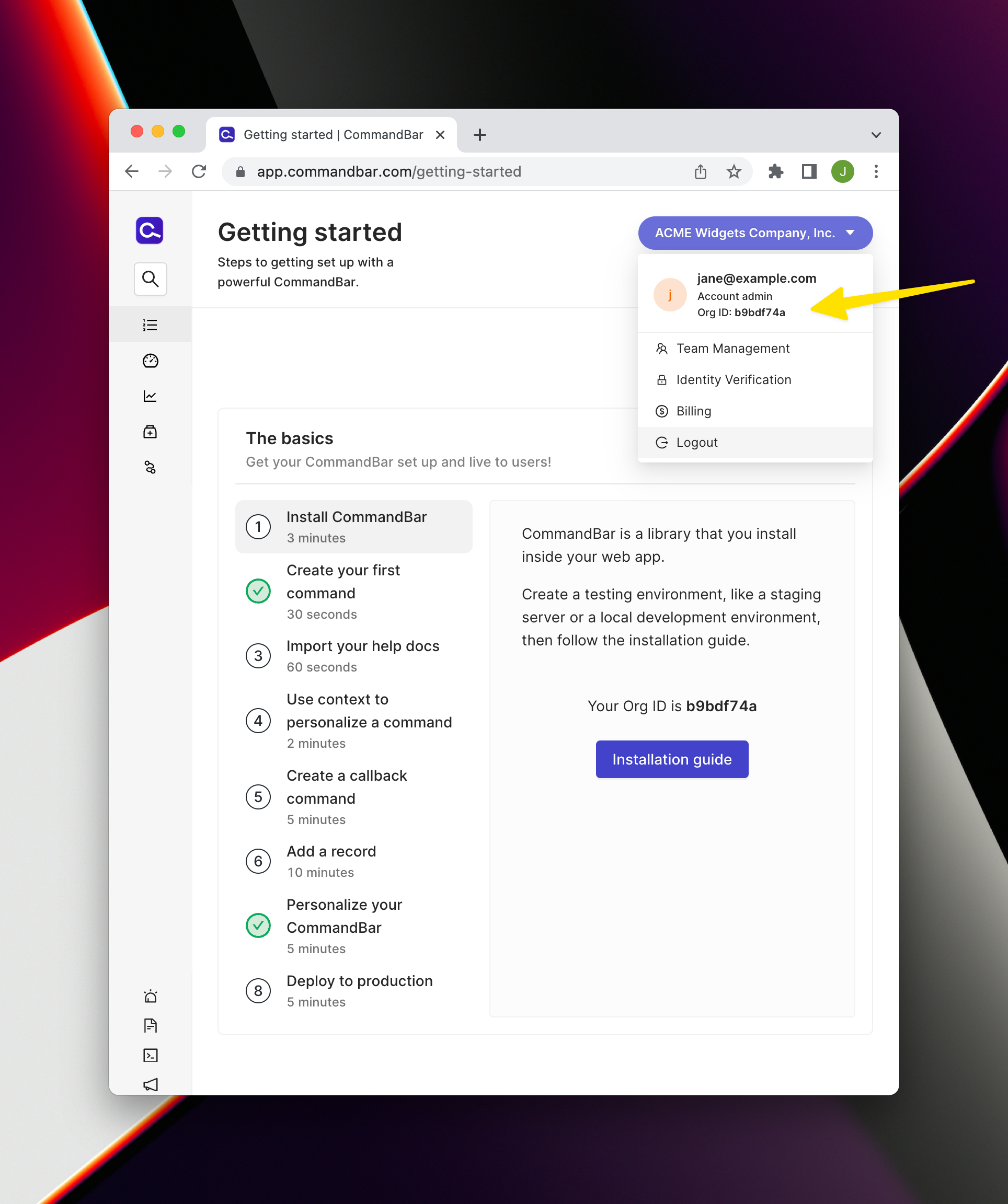CommandBar gives your users onboarding nudges, quick actions, relevant support content, and powerful search, in one personalized, blazing fast widget.
Learn more at https://www.commandbar.com
NOTE: this package is a beta release. We'd love to hear your feedback, bug reports, and questions; please reach out to us at support@commandbar.com.
Features
In just a few minutes, you can have a beautiful and fast command palette in your Flutter app.

Getting started
Before you start using the SDK:
- Sign up for a CommandBar account at https://app.commandbar.com/signup
- Copy your "organization ID" from https://app.commandbar.com/getting-started

Usage
Call CommandBar.initialize. This returns a CommandBarInstance with two fields:
widget: The CommandBar bottomsheet Widget. This should be installed in your app's widget hierarchycommandBar: An instance ofCommandBarSDK; this is how you make calls to the CommandBar SDK. See https://commandbar.com/docs and https://commandbar.com/sdk for detailed documentation.
The CommandBarSDK instance will need to be passed down to any Widget in your hierarchy
that needs to use the SDK. We recommend using Provider (https://pub.dev/packages/provider)
to do this. e.g.
# lib/main.dart
void main() {
runApp(Provider(
create: (context) {
final cbInstance = CommandBar.initialize(
orgId: '<your org id here>',
);
// This is optional; provide the user's ID so that analytics events can include it.
// You can also call `boot` later in your app initialization code if necessary.
cbInstance.commandBar.boot(<user ID of logged in user>);
return cbInstance;
},
child: const MyApp()));
}
class MyApp extends StatelessWidget {
const MyApp({super.key});
// This widget is the root of your application.
@override
Widget build(BuildContext context) {
final cbInstance = Provider.of<CommandBarInstance>(context);
var app = MaterialApp(
title: 'Flutter Demo',
builder: (context, widget) => widget != null
? Stack(children: [
widget,
cbInstance.widget,
])
: Stack(),
...
The call to commandBar.boot is optional; if included, you can provide the user's ID as well as any user
metadata. If you do this, analytics events will be tagged with the user's ID. (see
https://www.commandbar.com/sdk#boot for more details).
Opening the bar
Finally, we need to open the Bar by calling commandBar.toggle().
Using a button
class LauncherButton extends StatelessWidget {
@override
Widget build(BuildContext context) {
final cbInstance = Provider.of<CommandBarInstance>(context);
return IconButton(
icon: Icon(
Icons.bolt,
),
onPressed: () {
cbInstance.commandBar.toggle();
},
);
}
}
Using a gesture
class LauncherGesture extends StatelessWidget {
final Widget? child;
LauncherGesture({this.child});
@override
Widget build(BuildContext context) {
final commandBar = Provider.of<CommandBarSDK>(context);
return GestureDetector(
onDoubleTap: () {
commandBar.toggle();
},
child: child,
);
}
}
Using the Editor
The CommandBar Editor is how you can add commands to your Bar. Usually, the Editor can be used directly from your Bar in-situ on your site; however, for Mobile SDK integrations this won't work.
Instead, you can use the Editor via this link: https://mobile.commandbar.com/?org=your-org-id&editor=true
You can learn more about the Editor here: https://www.commandbar.com/docs/getting-started/open-editor
Additional information
Reach out to us at support@commandbar.com with questions, comments, or feedback.